Winneba Aboakyer Festival 2019 in pictures and videos
This year’s Aboakyer Festival has been held at Winneba by the Effutu people. It was pure display of #culture, #tradition, #art and #craft.
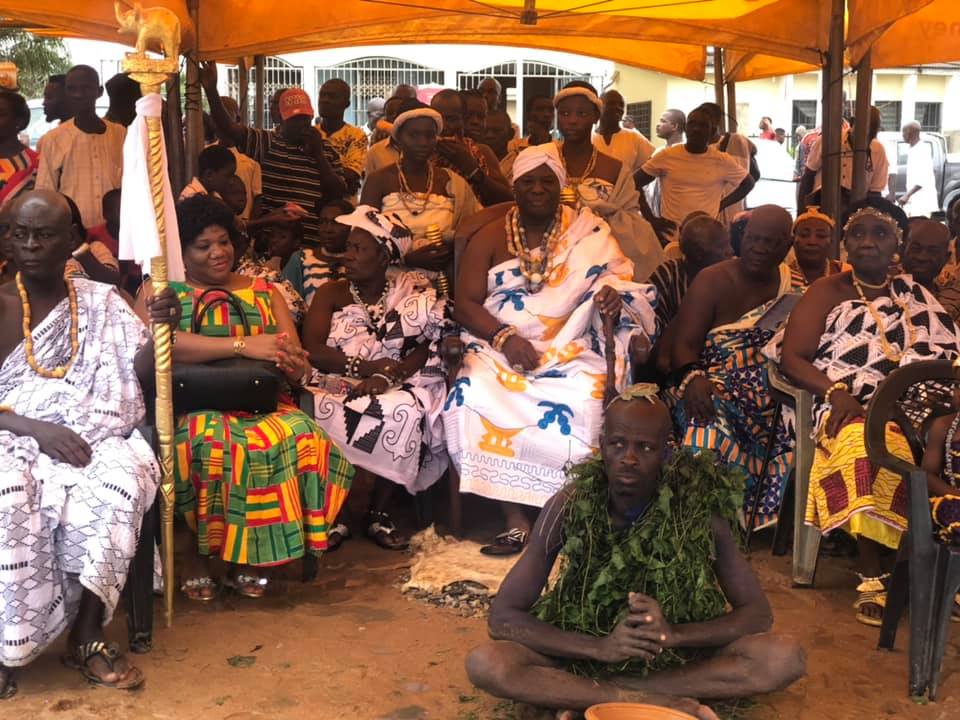
On Tuesday the fisher folks had their day at the beachfront with the ‘tug of war’ and ‘regatta’ (canoe race) amongst themselves to usher in the festival.
Scenes from Aboakyer Regatta by the fisher folks to usher in the #AboakyerFestival2019 at Winneba. The events were keenly contested with hundreds of community folks cheering them. #SeeGhana #EatGhana #WearGhana #FeelGhana #FestivalsInGhana
Posted by Ghana Tourism Authority on Thursday, May 2, 2019
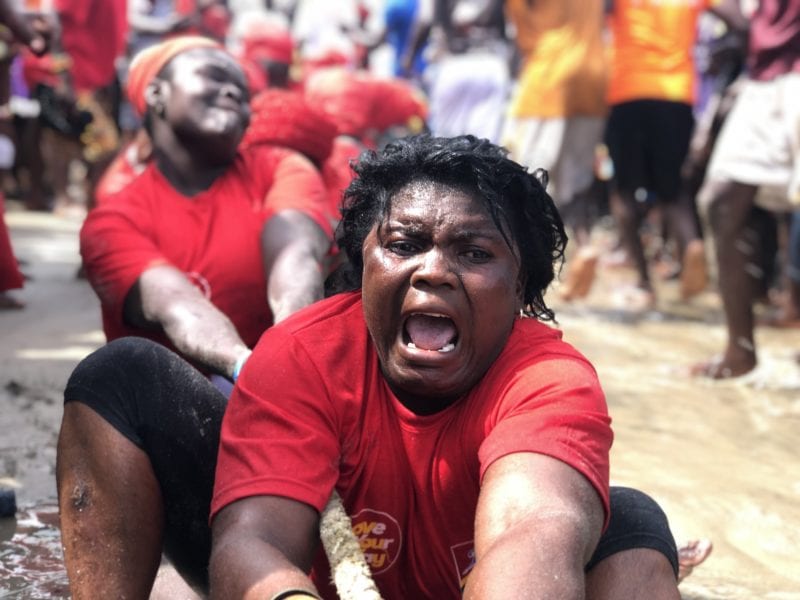
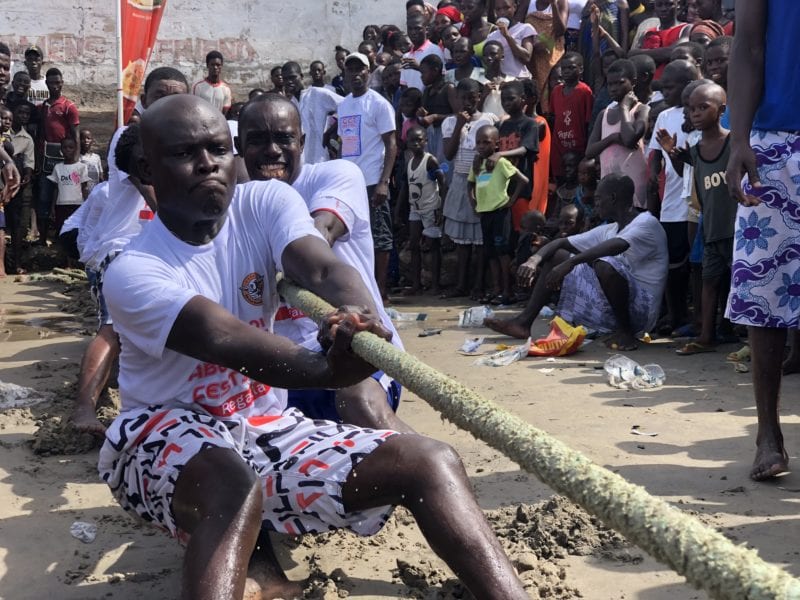
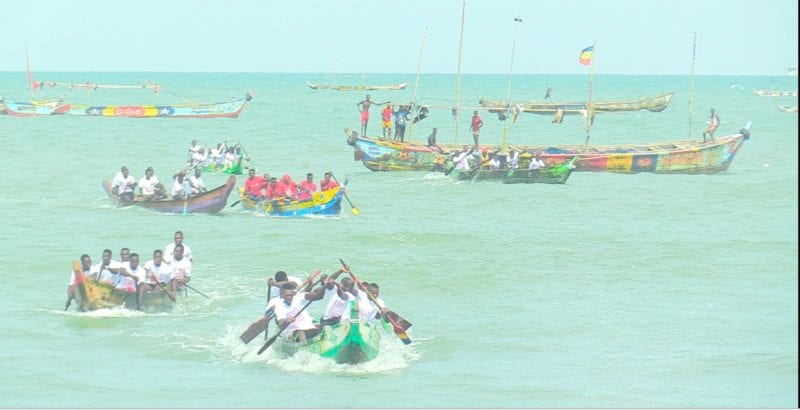
Scenes from Aboakyer Regatta by the fisher folks to usher in the #AboakyerFestival2019 at Winneba. The events were keenly contested with hundreds of community folks cheering them. #SeeGhana#EatGhana #WearGhana #FeelGhana #FestivalsInGhana

Scenes from Aboakyer Regatta by the fisher folks to usher in the #AboakyerFestival2019 at Winneba. The events were keenly contested with hundreds of community folks cheering them. #SeeGhana #EatGhana #WearGhana #FeelGhana #FestivalsInGhana
Posted by Ghana Tourism Authority on Thursday, May 2, 2019
The PinkThursday which is one of the new additions to the festival witnessed a large float through the principal streets.
Friday was for the parading of the gods by the two main Asafo groups. The Otuafo Asafo No. 1 and Dentsifo Asafo No. 2 through the town.
Tuafo Asafo No.1 group of Otuano Royal Stool House parading their god at #AboakyerFestival19 #AboakyerFestival2019..#festivalsInGhana #SeeGhana #EatGhana #WearGhana #FeelGhana
Posted by Ghana Tourism Authority on Friday, May 3, 2019
Tuafo Asafo No.1 group of Otuano Royal Stool House parading their god at #AboakyerFestival19 #AboakyerFestival2019
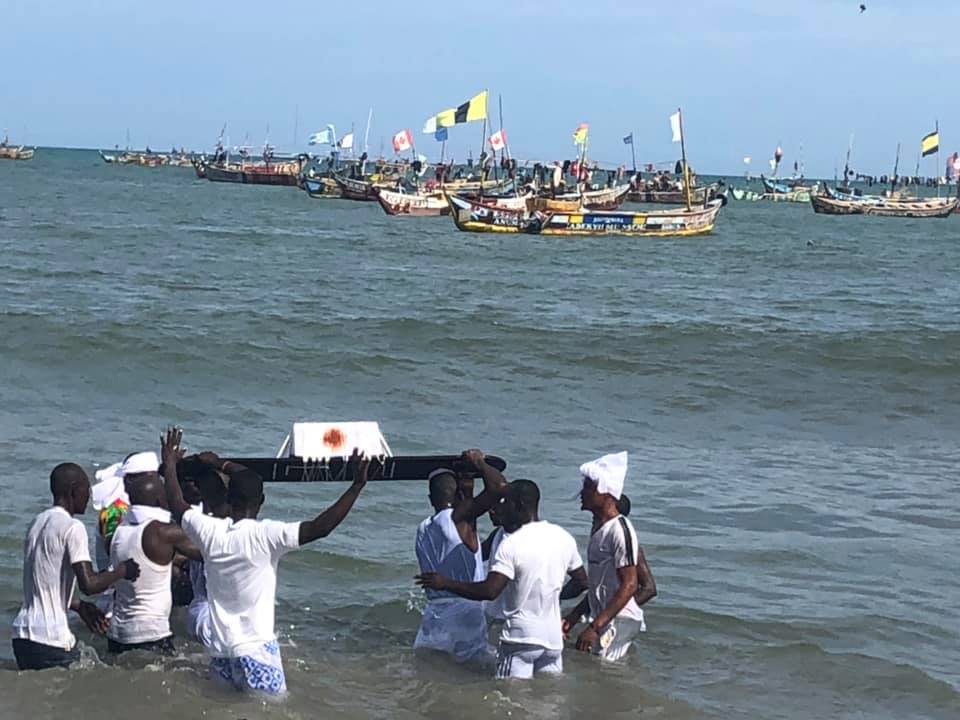
Winneba prepares for #Aboakyer deer hunting as they gather sticks for the hunt which starts at 5am tomorrow. #Winneba. #FeelGhana..#festivalsInGhana #SeeGhana #EatGhana #WearGhana #AboakyerFestival19 #Aboakyer2019
Posted by Ghana Tourism Authority on Friday, May 3, 2019
Winneba prepares for #Aboakyer deer hunting as they gather sticks for the hunt which starts at 5am tomorrow.
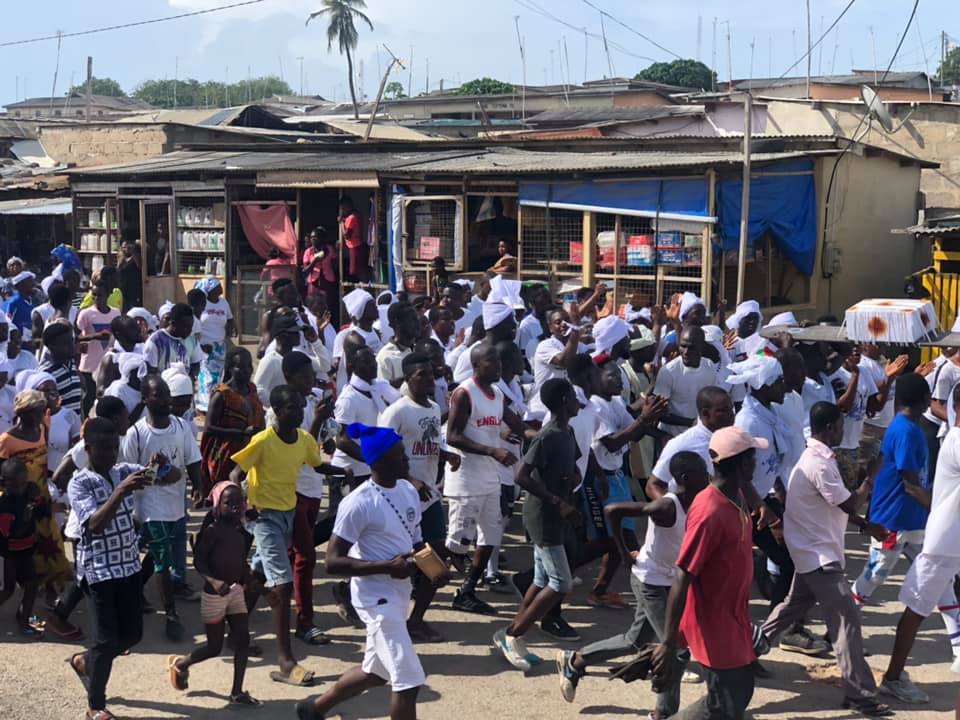
Tuafo Asafo No.1 group of Otuano Royal Stool House parading their god at #AboakyerFestival19 #AboakyerFestival2019. They then dip the god 3 times in the sea and proceed with the procession. FeelGhana
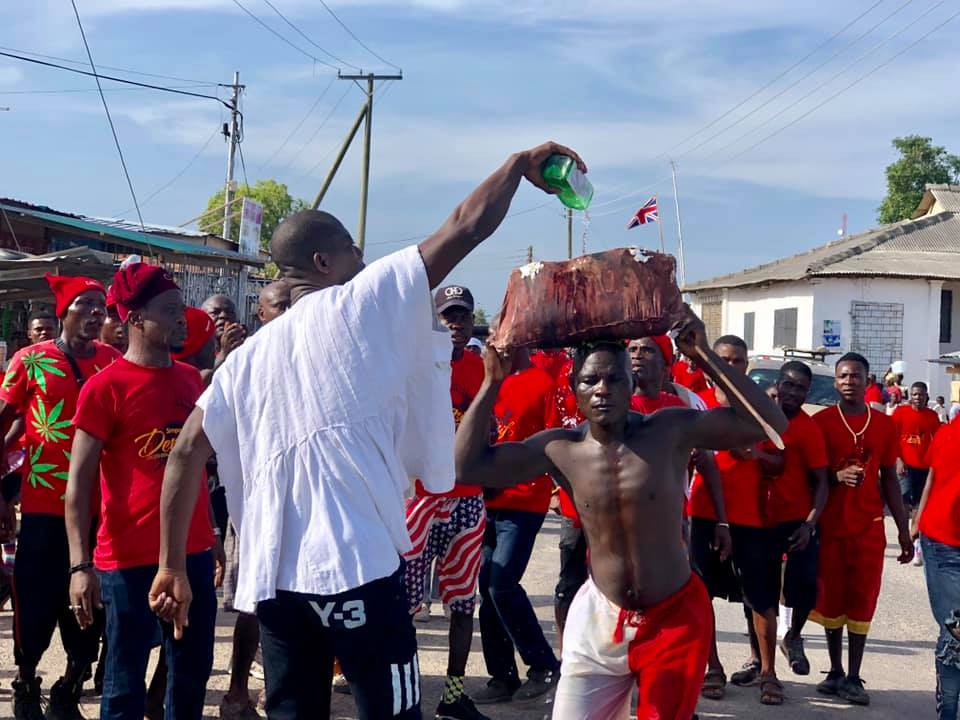
Dentsifo Asafo No.2 group of Twafo Royal Stool House parading their god at #AboakyerFestival19 #Aboakyer #Festival of the Efutu. They process with the god through the principal streets of #Winneba. #FeelGhana
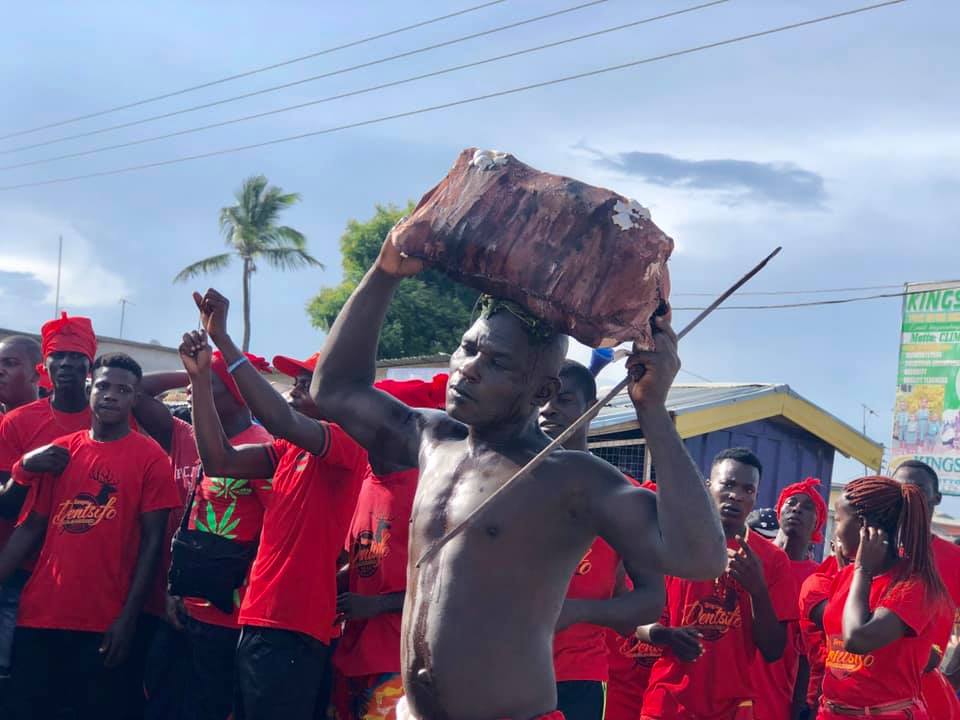
Then came the durbar day on Saturday, when the two Asafo groups set out to hunt for the deer at 5am. The first group that makes a catch then presents it to the durbar grounds for the chief to step on before it is sacrificed on Sunday.
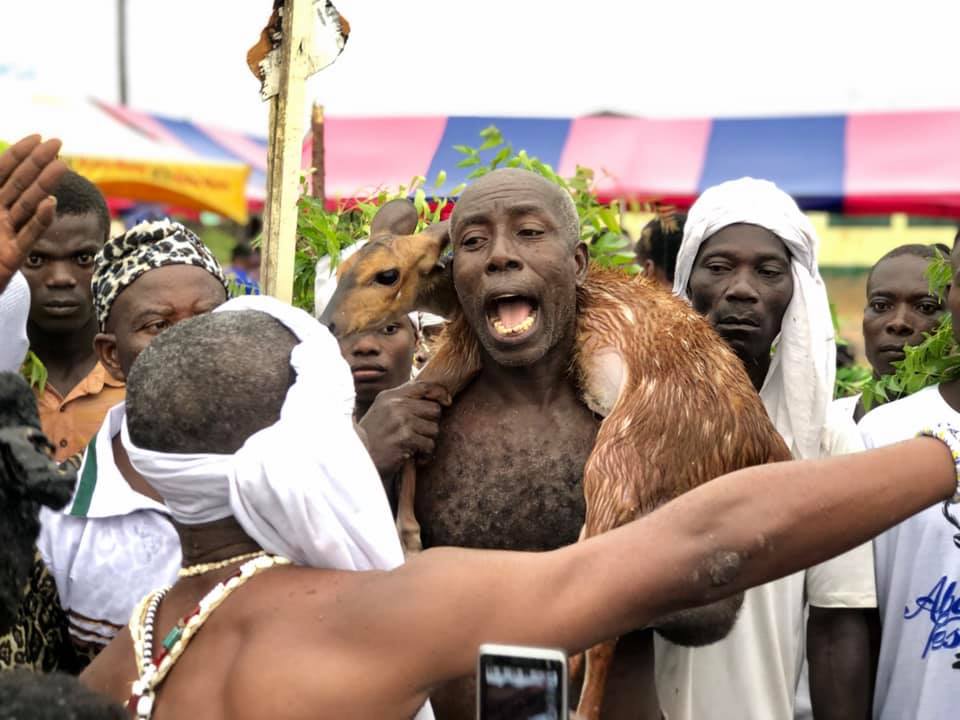
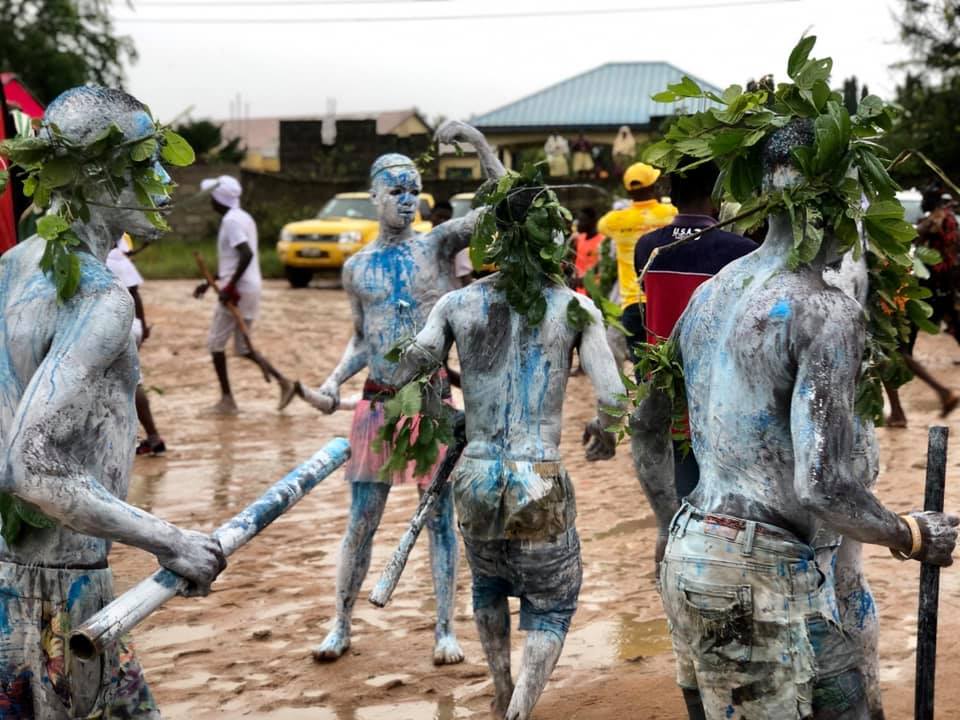
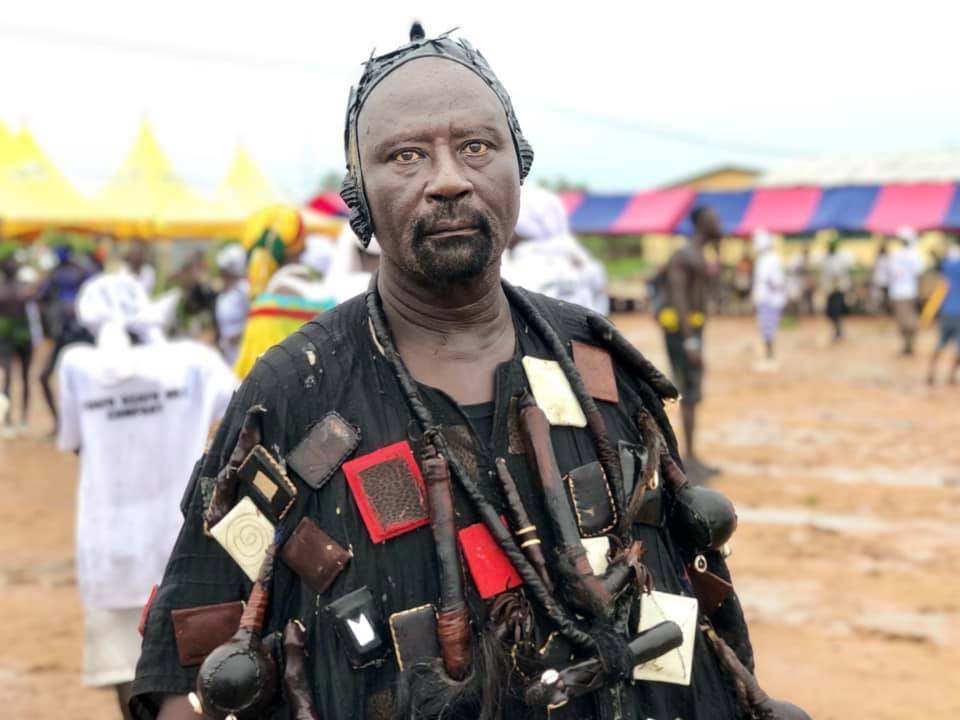
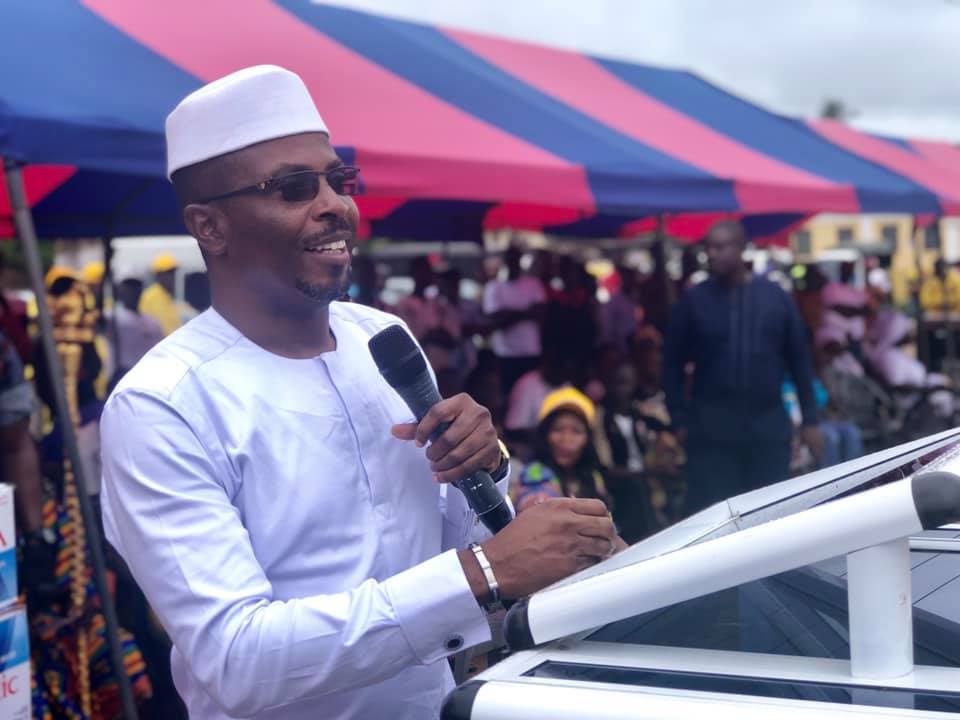
Paramount Chief cautions Aboakyer festival celebrants against negative acts
Winneba (C/R) May 3, GNA – Neenyi Ghartey VII, Paramount Chief of Effutuman and President of Effutu Traditional Council has appealed to celebrants of the 2019 Aboakyer to desist from negative activities that could mar the beauty of the festival.

He mentioned some of the negative acts as drunkenness, drug abuse and the indecent dressing that could carry another meaning to visitors.
https://www.facebook.com/ghanatourismauthority/videos/510428639490480/
The Omanhen made the call in an interview with the Ghana News Agency after a Regatta and Tag-of-War events between Fisherfolks at the Winneba beach, which formed part of the weeklong activities of the festival.
The event was jointly sponsored by Multipro Industries Limited (Indomie), Ghana Tourism Authority and Continental Christian Traders (CCT).

The festival which is themed “Sustaining our rich cultural heritage: our youth, our future”, commenced on Friday, April 27 and will be climaxed with a grand durbar on Saturday, May 4.
Aboakyer is celebrated with two gallant Asafo companies, who hunt for a live deer and the first group to arrive at a colourful durbar grounds with their catch will present it to the paramount Chief who will step on it three times as part of the traditional and customary rites.

In the afternoon of the same day, the Chiefs and Asafo companies will process through the principal streets amidst royal drumming, dancing and singing of Asafo songs to the Omanhen’s palace and later in the night with a state dance to crown Ms. Aboakyer of the year.
According to Neenyi Ghartey, the festival was significant to the growth and prosperity of the Area and expressed the need for all natives of Effutuman, home and abroad to attend the festival in their numbers and contribute their quota towards the development of the Town.
Source: GNA
James Town to James Town: NAACP’s historic trip from Virginia to Ghana to connect the black Diaspora to Africa

To mark the 400th anniversary of the arrival of the first enslaved Africans in America, the government of Ghana launched the “Year of Return, Ghana 2019” in a quest to encourage African Americans and the black diaspora to return to the country where their ancestors were kidnapped and enslaved.

Since its announcement, the Year of Return campaign has gained the interest of several diasporas ready to make the trip back home. In January, it was also officially endorsed by the government of Jamaica through its Minister of Culture, Gender, Entertainment and Sport, Olivia Grange, who was present at the Caribbean launch of the Year of Return in Kingston.

More recently, the National Association for the Advancement of Colored People (NAACP) has announced the Jamestown to Jamestown Memorial Trip to Ghana as part of the Year of Return activities.
MORE ABOUT THIS
Announced by Diallo Sumbry, Ghana’s first Black American Tourism Ambassador at the 50th NAACP Image Awards in Hollywood, California, the James Town to James Town memorial trip to Ghana is expected to be patronized by willing diasporans and members of the NAACP.

The historical tour will begin in James Town, Virginia to mark 400 years since the arrival of the first enslaved Africans at the landing site and will end in James Town, Accra, a former port and slave market with significant monuments and sites in relation to slavery and colonisation.

The tour is expected to start on August 18 from Washington, DC by bus to Jamestown, Virginia for a prayer vigil and candle lighting ceremony marking the African “Maafa,” a term describing the horrific suffering embedded in the past four centuries related to the enslavement process. A return trip back to DC for a special gathering at the National Museum of African American History and Culture designed by Ghanaian architect Sir David Adjaye will be followed by the departure to Ghana.
In Ghana, there will be 7 to 10 days of rich cultural, spiritual and cathartic experiences which include a Business, Investment & Development Summit, Black Tie Gala, AfricanAncestry.com DNA Reveal Ceremony, Cape Coast and Elmina Castle Visit, Assin Manso Last Bath Slave River and a trip to Kumasi for the Akwasidae Festival at Manhyia Palace of the great Ashanti Kingdom.

Speaking on the tour at the 50th NAACP Image Awards which was attended by several stars including Tracey Ellis Ross, Erika Alexander, Beyonce, Jay Z, and Taraji P. Henson, Ambassador Diallo Sumbry said: “I am honoured to manifest partnerships with organizations such as the NAACP to be able to help push how Africa is represented and promoted to the Black diaspora and contribute to this movement in the milestone Year of Return. Jamestown to Jamestown is an effort to connect the Black Diaspora’s present to our African past in ways to empower and invigorate the continued struggle for full liberation and justice worldwide.”
The event is in partnership with several huge businesses in Africa and the U.S. and the Adinkra Group which Diallo Sumbry is the founder.
Why the ‘slave Bible’ had full chapters removed
A publication by NBC News has revealed how the slave bible used to teach slaves had several pages and in some cases, whole chapters removed to “Instill Obedience And Uphold Slavery”.
The “Slave Bible” on display at Washington’s Museum of the Bible has a mere 232 chapters, showing how whole chapters were removed to instil obedience, prevent rebellions and promote the horror of slavery.
Also Read:
Where slaves begun their journey to the Americas
CNN Travel Lists Ghana as top place to visit in 2019
Inside Ghana’s Elmina Castle is a haunting reminder of its grim past
Watch the full report below:
Source: NBC News
US College students spend unforgettable spring break in Ghana
Tallahassee Community College students came on a trip of a lifetime to Ghana during their Spring Break of 2019. The group arrived in Accra, Ghana, on March 16, 2019, to begin their tour.
This is the second year that professor Forster Agama, the group’s leader, has successfully coordinated the Study Abroad Trip to Ghana.
On March 17, the group had a guided tour of the Kwame Nkrumah Mausoleum and the Independence Square where they learned about the history of Gold Coast and Dr. Kwame Nkrumah, the 1st Ghanaian to be elected President of the Republic of Ghana. They later visited the University of Ghana and then continued on to Ho, the capital city of the Volta Region.
Yasmine A. Ameli, a first-year student at TCC, said, “This trip was everything I needed rolled into the span of 10 days. I discovered parts of myself and a certain kind of peace I never knew existed. We tend to forget what life is about in the midst of school, work and our personal lives. This … gave me more insight to what my life’s purpose is. I am forever grateful for what this opportunity provided. Africa is (truly) where it’s at.”
While in the Volta Region, the group had the opportunity to visit the Tafi Atome Monkey Sanctuary and Sacred Grove. This community was inhabited by the Sacred True Mona Monkeys, who were believed to have lived there prior to the arrival of the ancestors of the local community. The group learned about the community, their traditions, and then later went on a hiking tour to Wli Falls, which is the highest waterfalls in Ghana.
“Wli – allowed me to flow,” Giovanni King, a TCC student said. “I enjoyed visiting the Wli waterfalls; it was definitely worth the hike and I would do it again if given the chance.”
Jazmine Hawkins, a sophomore student at TCC comments, “The only way to describe the trip to Ghana is absolutely incredible. It was a big culture shock for me since I knew nothing about Ghana except that it was in Africa prior to this trip. Seeing how people live differently in a whole other continent was just incredible. I loved everything about it and hope to go back someday.”
The enthrallment did not end there; the group continued on to the Ashanti King´s Palace in Kumasi, which was used by the Ashanti kings until 1974. They explored this historic site, visited the museum as well as stopped at the Kente clothing weaving village, Adanwomase in the Ashanti Region to learn about the creation and the tradition of Kente clothes.
At the Adinkra village, the students were introduced to the traditional meaning of the Adinkra symbols of the Ashantis. They also participated in a workshop and designed their own print clothes.
“Growing up in a similar culture to the one in Ghana, this trip was nostalgic,” Zamia S. Taleghani, a first-year student at TCC, said. “I always knew what was presented in media about Africa was not always depicted honestly. I am now equipped with the experience this trip offered to combat the negative stereotypes and ideas presented in our everyday society. It was such a breath of fresh air, literally and metaphorically.”
The expedition to the Assin Manso Slave River was breathtaking, to say the least. This was where the captured Africans from the Northern part of Ghana and other parts of Africa had their last bath. The group continued on to Cape Coast Castle(dungeons and the door of no return) which was used to hold the captured before they were loaded onto ships and sold in the Americas, especially the Caribbean as slaves.
Jasmine Morris, a TCC student states, “Overall this was a great trip. I enjoyed learning about Ghanaian culture. It was quite an experience to be able to walk through and see special places contained in history. Being able to travel to a land in which my ancestors lived was especially emotional and exciting. All of the tours were great learning experiences and I learned a lot of information.”
As the trip advanced to its final days, the group visited a typical Ghanaian village close to Cape Coast and were welcomed by the elders of the village during an official greeting ceremony. The group toured the primary school being built by the community, made monetary as well as material donations to the school, and held a school lesson for the children. After taking lunch in the village, the students were treated to a typical cultural performance by the women and children of the village.
“What I enjoyed during the trip was going to the village and visiting the school and the church,” Muraiye Pierre, a sophomore student at TCC said. “The home-cooked meal that they made for us was delicious. I honestly wish I could have spent more time with them. The fact that they were so grateful and excited for the little that we brought and donated filled my heart with joy. Two of the kids from the village gifted me with drawings that they made that is now placed beautifully on my wall in my room. I will remember them forever.”
Finally, the group stopped at the Kakum National Park, an undisturbed virgin rain forest and one of the most frequently visited national parks in Ghana. They enjoyed the view from the Canopy Walkway over seven bridges and tree-tops at 40m height.
Mary Wilson, a TCC student says, “Traveling is a huge component of a study abroad experience. I was grateful for the opportunity to visit historical sites such as the Kwame Nkrumah Mausoleum, Memorial Park, W.E.B. DuBois Centre, and the Assin Manso Slave River. I will treasure these memories forever.”
“Visiting Ghana was by far the most amazing and humbling experience I’ve ever experienced. I’m eternally grateful that I had the opportunity to visit such a beautiful country, full of beautiful people of all shades of colour,” said Torrence Harrell, a final year student at TCC.
Hillary Eaton, one of TCC’s student travellers, said, “My overall experience in this program, and in Ghana, was very life changing. I feel very blessed to have been able to return to my roots and learn about a culture that was once lost to me and so many people.”
For more information about this or future trips to Ghana, contact Forster Agama at 850-201-8058 or agamaf@tcc.fl.edu.
Source: tallahassee.com
Year of Return: Heritage And Cultural Society of Africa Summit to be launched
The Heritage and Cultural Society of Africa (HACSA) will on Tuesday, April 30, 2019 launch the Heritage and Cultural Society of Africa (HACSA Summit) 2019 at the Kempinski Hotel Gold Coast City, Accra on Tuesday Aril 30, 2019 at 6pm.
About Heritage and Cultural Society of Africa (HACSA)
The HACSA Summit will bring leaders, practitioners and academics from all over the African Diaspora to discuss the 400 Year Legacy of the Trans-Atlantic Trade in Enslaved African People, the impact on and linking of affected Communities and Innovation and creative strategies to overcome its effects.
To learn more visit: thehacsa.org
Ghana Diaspora Celebration and Homecoming Summit 2019 to be launched
The Office of Diaspora Affairs at the Office of The President will on Tuesday, April 30, 2019 launch the Ghana Diaspora Homecoming Celebration 2019 at the plush Marriot International Hotel, Airport City.
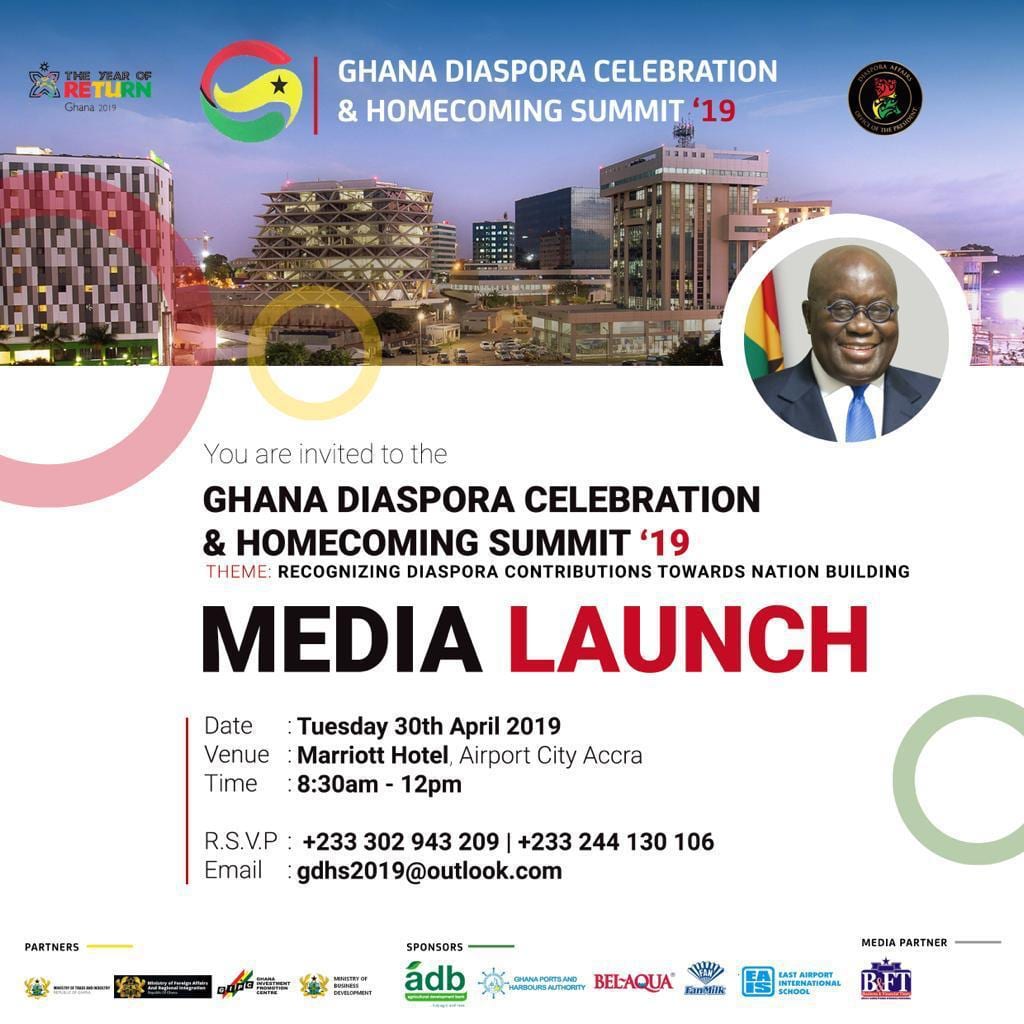
The event which is under the theme ‘Recognising Diaspora Contributions Towards Nation Building’ will take place at 8:30 am with support from the Ministry of Trade, Ministry of Foreign Affairs, Ministry of Business Development, and GIPC.
About Ghana Diaspora Homecoming Celebration 2019
Ghana was virtually built by her diaspora. From historic contributors such as Tetteh Quarshie and the Big Six to current difference makers like the CEO Group and Patrick Awuah, Ghanaians who left the shores and came back have played pivotal roles in the nation’s development. Yet recognition of the Ghanaian diaspora has been a virtual afterthought.
The Ghana Diaspora Celebration will use July 3rd through 6th in 2019 to do just that. The programs designed for this celebration will highlight and recognize diaspora contributions to nation building while delivering convincing advocacy for policies and systems to facilitate the unleashing of significantly more contributions from the Ghanaian diaspora.
2019 Edina Bakatue festival launched
The Chief Executive Officer of the Ghana Tourism Authority, Mr. Akwasi Agyeman was the special guest at a colourful ceremony graced by the Paramount Chief of Edina Traditional Area, Nana Kwadwo Konduah VI to launch the Edina Bakatue Festival at the forecourt of the Paramount Chief’s Palace at Elmina in the Central Region.
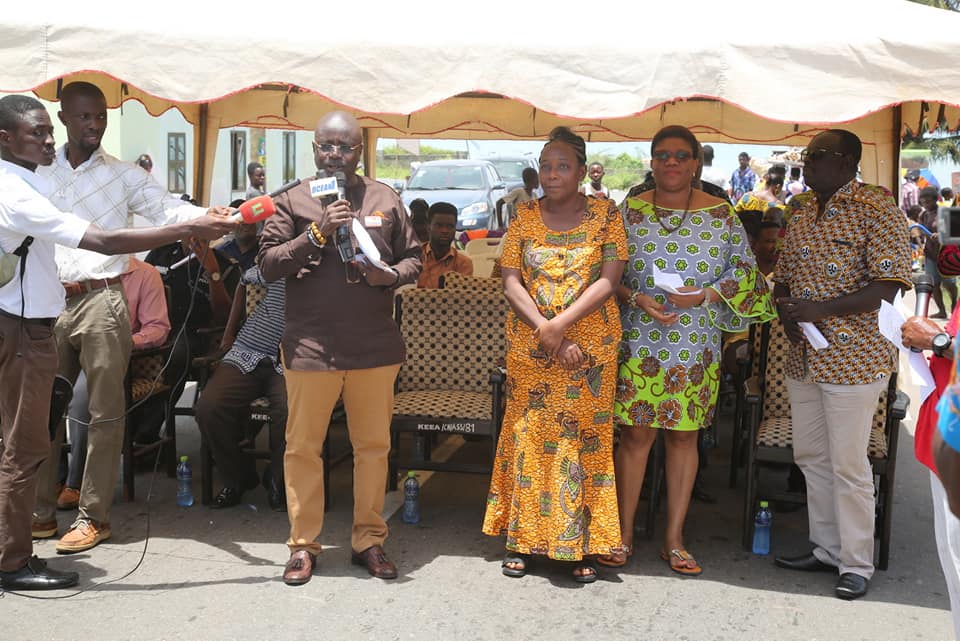
In attendance were the staff of GTA, The Municipal Assembly, The Chiefs and People of Edina, Police Personnel, the media and the general public.
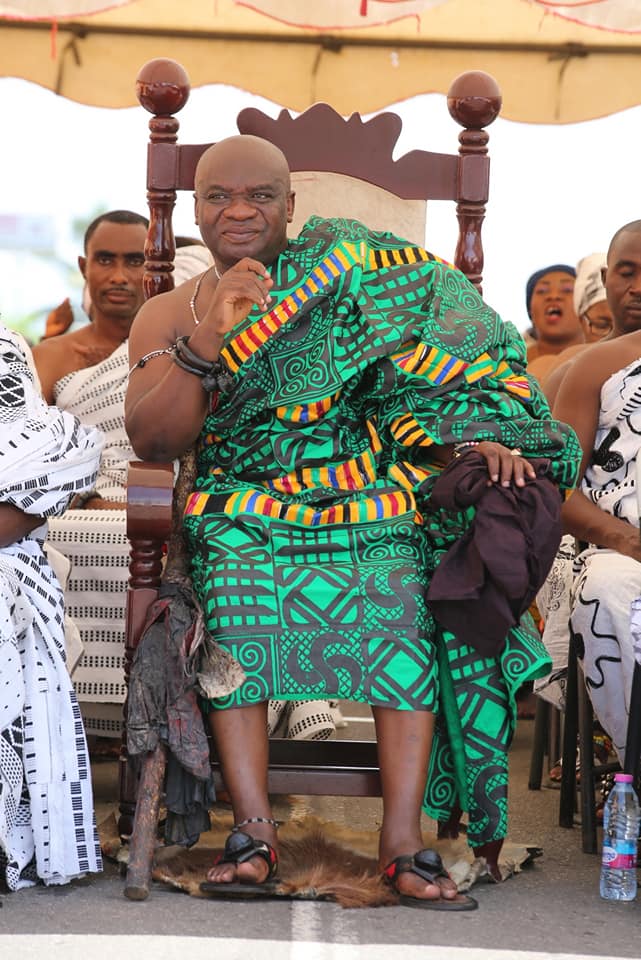
This year’s festival is under the theme “Buy Made In Ghana Goods, Use Made In Ghana Goods and Promote Jobs for the Youth. This is part of the continuous efforts by Nana Kwadwo Konduah VI addressing the growing unemployment amongst the youth.
Read More:
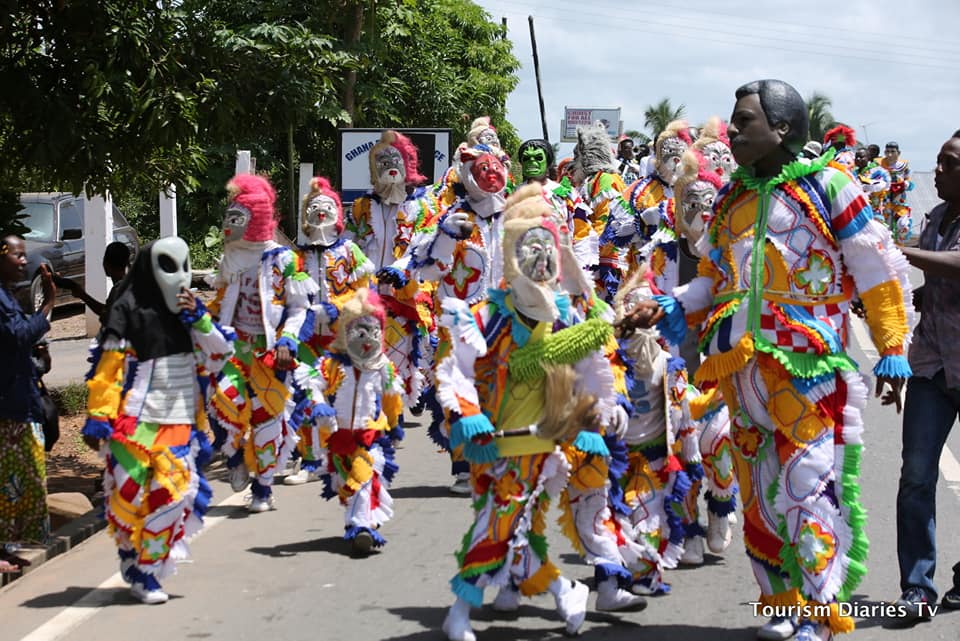
Ghana’s Lost Historic Mosques
This is an article by Baptist Missionary who explored the historic sudanese mosques in the northern part of Ghana. The article explores the origins of the mosques to why some have disappeared
This is the last in of a series of posts about Ghana’s only six remaining historic mud mosques built in the Sudano-Sahelian architectural style.
When I embarked on my project to visit the last of Ghana’s mud mosques, I thought I would be seeing nine according to the Ghana Museum & Monuments Board website. Unfortunately, there are only six still standing and in use: Larabanga, Banda Nkwanta, Nakore, Maluwe, Bole, Wuriyanga.
How Many Mud Mosques did Gold Coast/Ghana Have?
 A century ago, every mosque in the north was made of mud simply because that was the primary material used. Look through archival images from the early colonial era and every mosque is some sort of variation on the Sudano-Sahelian* style.
A century ago, every mosque in the north was made of mud simply because that was the primary material used. Look through archival images from the early colonial era and every mosque is some sort of variation on the Sudano-Sahelian* style.
Rudolph Fisch’s images of Mamprugu in 1910 show the Gambaga mosque as a white-washed mud structure in the Sudanic style. Famed American modernist photographer Paul Strand shot a mud mosque in Tanina, Ghana on his 1964 photographic tour of the country that culminated in the incredible book “Ghana: An African Portrait.” Additionally the British National Archives contain images of mud mosques in 19th century Bimtuku (though it’s hard to determine where that village is and it’s possible the images are of Boundoukou, Cȏte d’Ivoire).
Why Have Ghana’s Mud Mosques Disappeared?
There are several factors that have made these mud mosques so rare today. The primary reasons are of function:
- This mud architecture requires thick walls and supports which don’t actually leave much space inside for worshippers. A mosque like Nakore‘s could only hold about 25 people during prayers. The large Woriyanga mud mosque might accommodate 60 or 70 at most. As followers of Islam increased in number in northern Ghana, the mud style of building was no longer practical.
- Newer materials like zinc roofing and cement cinder blocks allowed for much larger mosques that were less labor intensive and required less maintenance (mud mosques need to be re-plastered annually).
- The art of mud construction has been lost as the newer generations of builders are using the newer aforementioned materials.
And finally, the mosques disappeared because their style fell out of fashion. The old, “primitive” styles were abandoned for modern, “civilized” buildings modeled after the modern mosques seen in images from the Middle East and North Africa.
It’s only in recent years that interest in these mud mosques has been revived as they are now seen as historical landmarks and cultural treasures.
The Most Recent Mud Mosques to be Lost
I mentioned that I expected nine mosques but only saw six in any decent condition. Here are the ones that have recently been razed or are in pitiful ruin.
Dondoli Mosque, Wa
Named after the neighborhood in which it stood, the Dondoli mosque in Wa is hard to find. It has been abandoned and in ruin for so long that most people don’t even know what you’re talking about if you ask bystanders for directions. When we finally got directions, we had to walk through narrow, winding alleyways in the dense residential neighborhood to reach it. Its lack of visibility has probably hurt its chances of being restored as a historic and tourist attraction.
Luck would have it that when I visited the crumbling structure in April 2018, an old man passing by stopped to chat with us. His name was Malaam Fuseini and he explained that his great-grandfather Karimafa migrated to Wa from Mali and built the mosque. Fuseini claimed that the mosque was originally named after its founder – Karimafa Mosque.
Another interesting story Fuseini shared was that his grandfather Lumaam Mahama took a pilgrimage to Mecca. He says it took him 22 years to walk and work his way to Mecca and back. When he returned he brought with him a complete Qur’an for the community.
Today, the Dondoli neighborhood (also known as Fa Muni?) has the standard, large, block mosque to serve its members. At the time of my visit they were also in the middle of constructing a muslim community center next to the old, mud mosque to hold meetings, weddings and other community events.

Wechiau Historic Mosque
The old mud mosque in Wechiau is barely standing today and no longer in use. It’s a shame because with the nearby Wechiau Hippo Sanctuary bringing in visitors, this architecturally unique structure could generate some income from tourists. As it stands in 2018, it looks pretty much irreparable.
Of all the mud mosques I’ve seen in Ghana, this one had a most unique design that seems to be a mashup of both the Sudanic and Djenne architectural styles. It had buttresses like Sudanic mosques but only one tower (now collapsed) like the Djenne style seen in Woriyanga, Ghana. Looking at the interior, it seems that the columns were much too small and spaced out to support the flat mud roof. After the initial collapse of the roof, it was replaced with zinc but eventually the building fell in to disuse as the newer, larger mosque was built just behind it. Traditionally, unused mosques are not demolished but instead are just left to elements.
I’ve searched online for images of the mosque before it had fallen into disrepair but couldn’t find anything. It may be that it has been abandoned for a few decades.
Dakrupe
This small village between Bole and Larabanga is still listed on the GMMB website as having a mosque. However, the Maluwe mosque’s imam informed me that it was destroyed nearly a decade ago to make room for a larger, modern cinder-block mosque. I’ve not been able to find any photographic evidence online of the Dakrupe mosque.
I should also note that the Maluwe imam mentioned that the village of Mandari also used to have a mud mosque that was destroyed in his lifetime. Again, I haven’t been able to confirm that or find any record of its existence.
“Sudano-Sahelian” can be a confusing term today because it sounds like it is associated with the East African country of Sudan. The term however comes from “French Sudan” which was France’s colonial territory in West Africa from around 1880 to the 1960s. The French, in turn, used the name “Sudan” because West Africa, south of the Sahara and north of the forested coastal regions, features a geographical region known as Sudanian savannah (or Sudanian grassland). Therefore, the architecture of Ghana’s Sudano-Sahelian mud mosques are not related to any tradition from Sudan or East Africa.
Source: William Haun
8 Historical mosques with similar architectural design
The most popular ancient mosque in Ghana that attracts lots of tourists is the Larabanga mosque. This mostly due to its unique architecture and era it was built.
However, the Larabanga Mosque is not the only mosque in the country that is worth all the hype. There are many equally amazing mosques (8 to be exact) scattered around Ghana which are similar.
Most of the communities of the regions of Northern Ghana, especially the Northern Region, are Muslim. Islam, which first entered Africa in the 10th Century AD, progressed from Egypt towards the western and the southern parts along the gold trade routes during the trans-Atlantic slave trade period.
In Ghana, these trade routes were used by Mande warriors, Islamic Traders and Missionaries. Occasionally, these routes were marked by incursions by the Almoravids, a Berber Dynasty, which played a major role in the spread of Islam in the area. These mosques were constructed to serve as rest points for the Islamic traders along the routes, and in conquered territories people were converted to Islam. Some of these mosques still exist today and date back as far as the 17th Century AD.
Let’s take a look and see if you agree with us.
1. Dakrupe Mosque
Interestingly, this mosque is very close to the Larabanga mosque but it has been absolutely abandoned as a tourist attraction although it is still in use. The mosque was built in the 19th century and it shares some features with the Larabanga mosque but it’s a little smaller.
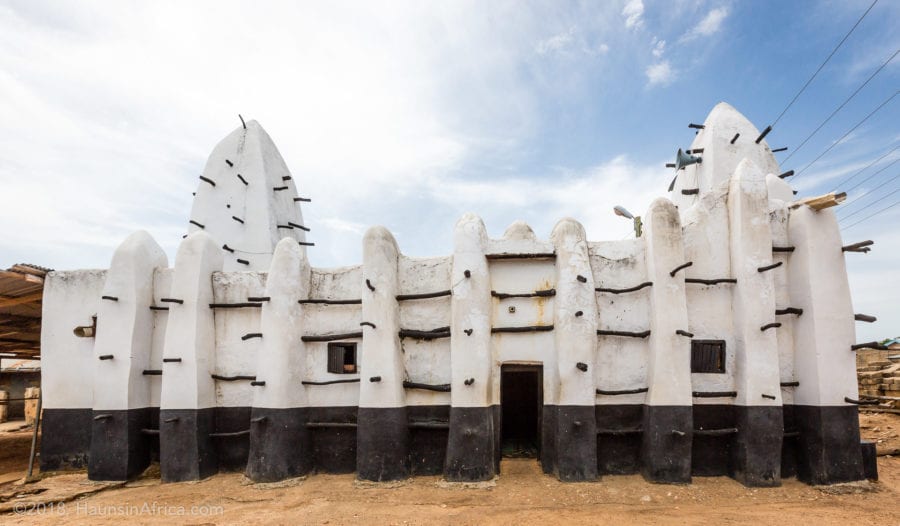
Read more:
2. Banda Nkwanta Mosque
This particular mosque is taller than what we have at Larabanga due to it’s higher parapets. It is situated at West Gonja District in the Northern Region.
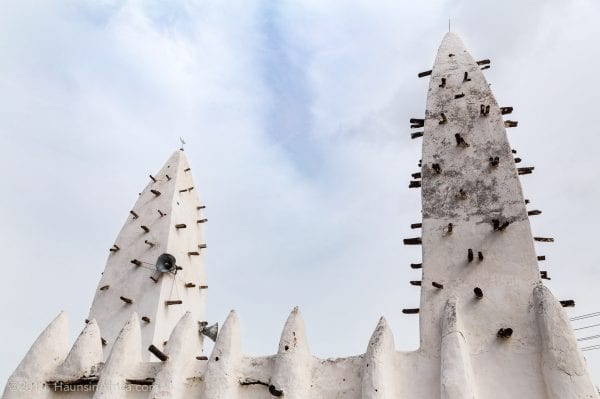
3. Nakore Mosque
The Nakore Mosque is located in the Upper West Region and also shares similar features with the Larabanga mosque, but unfortunately, little is known of the place.
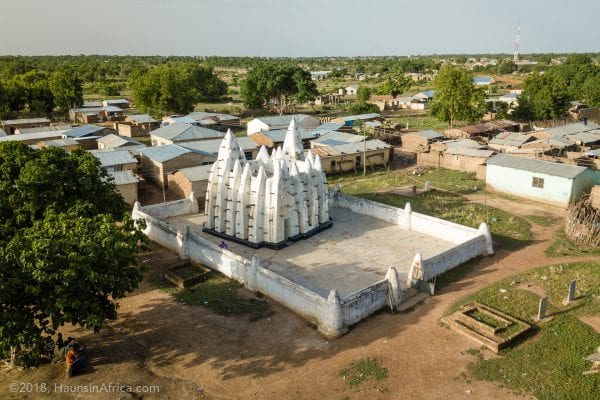
Read More: Ghana’s Historic Mosques: Nakore
4. Maluwe Mosque
Maluwe Mosque is in the Northern Region, on the way to Bole, in the West Gonja District. It’s parapets are huge and bigger than what’s at Larabanga and appears to be cleaner.
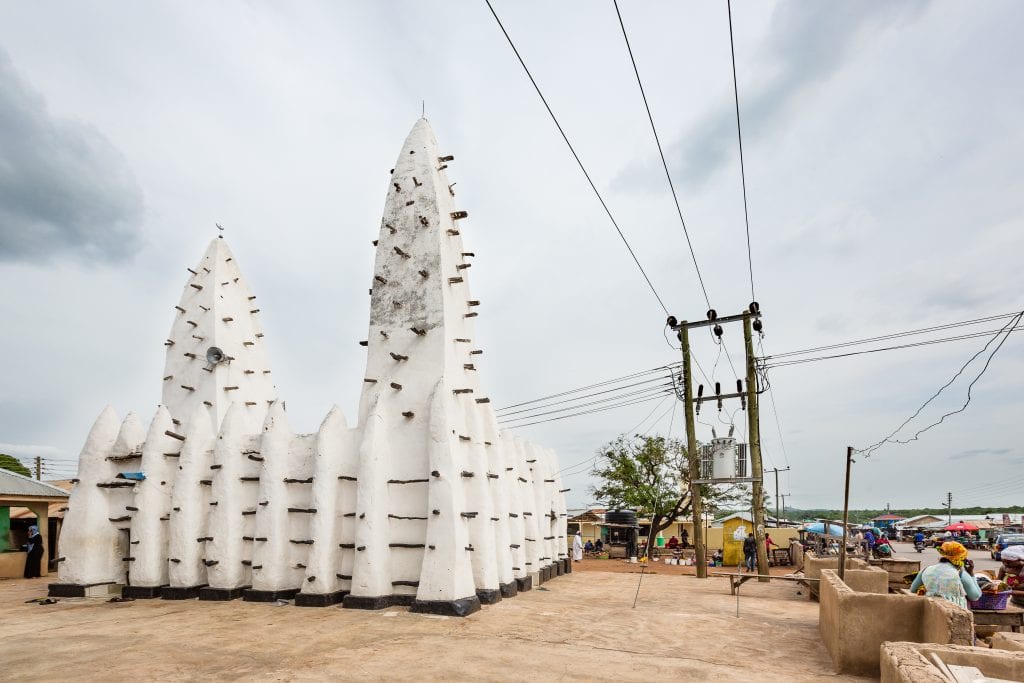
Read more: Ghana’s Historic Mosques: Maluwe
5. Wuriyanga Mosque
This 19th Century mosque is in the Upper East Region, beyond Garu, near the Togo Border. It is currently undergoing restoration works by the local community.
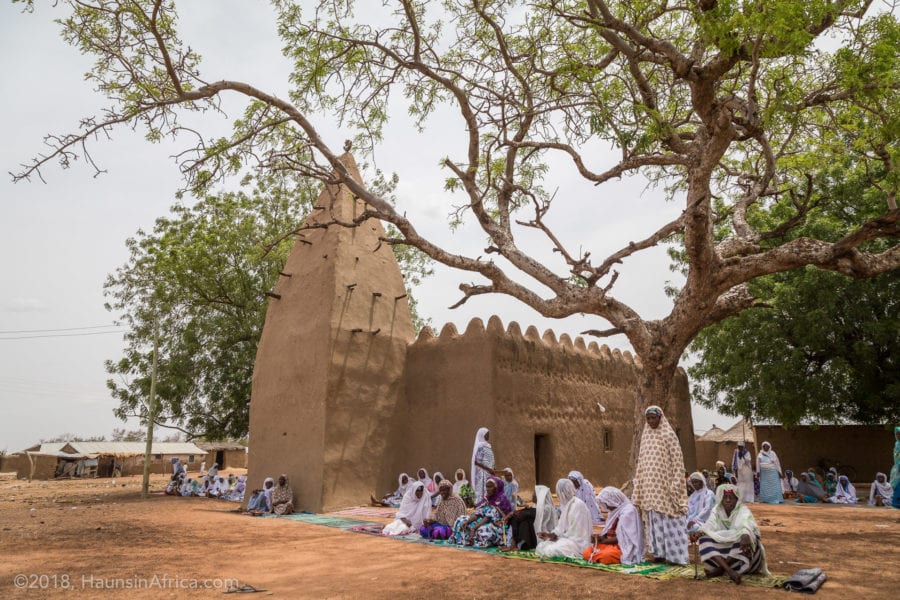
6. Wechiau Mosque
This mosque is located in the Upper West Region and has identical features as the Larabanga mosque. However its design is more of the Sudanese style than the Djenne type.
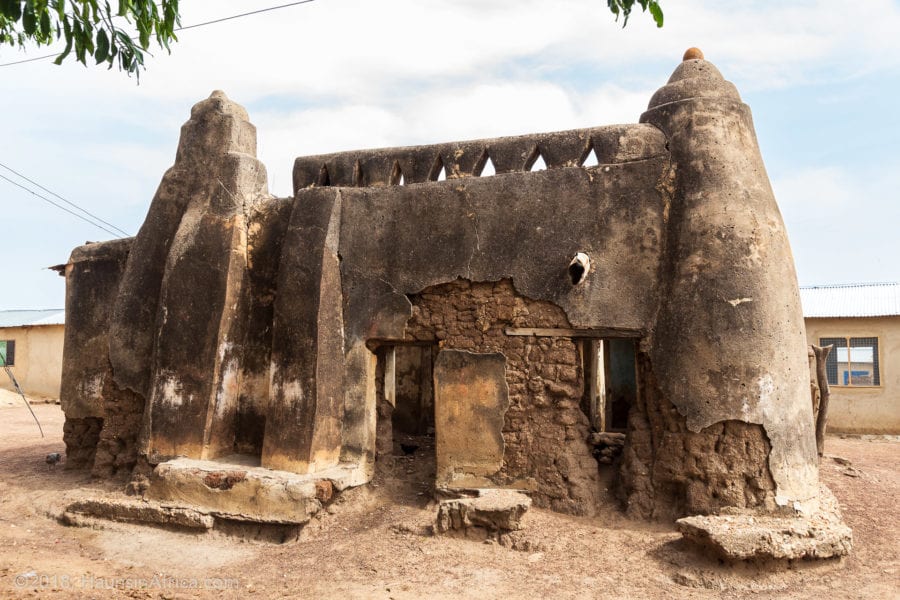
7. Dondoli Mosque
This 19th Century mosque is in Wa, the capital of the Upper West Region.
8. Bole Mosque
Bole Mosque is in West Gonja District, in the Northern Region.
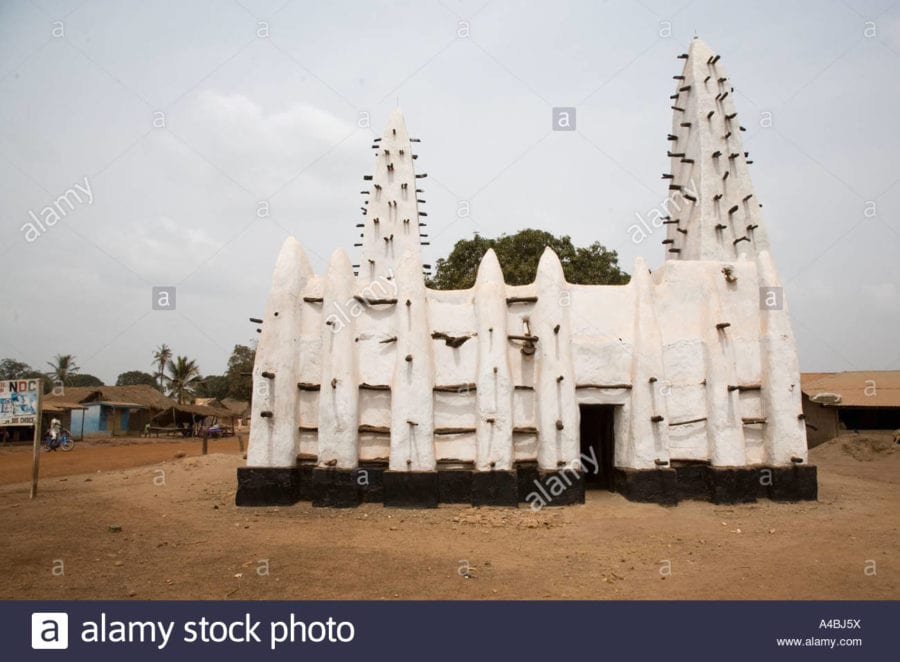
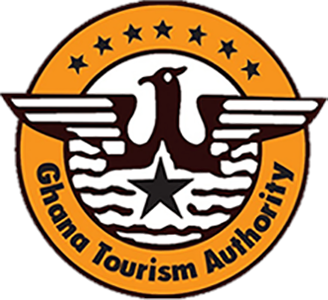

 Call Center
Call Center
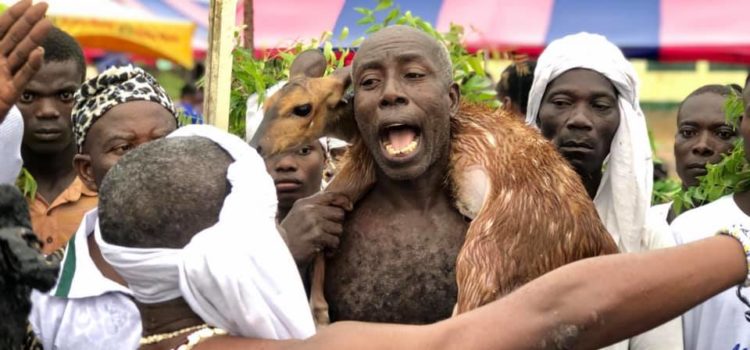
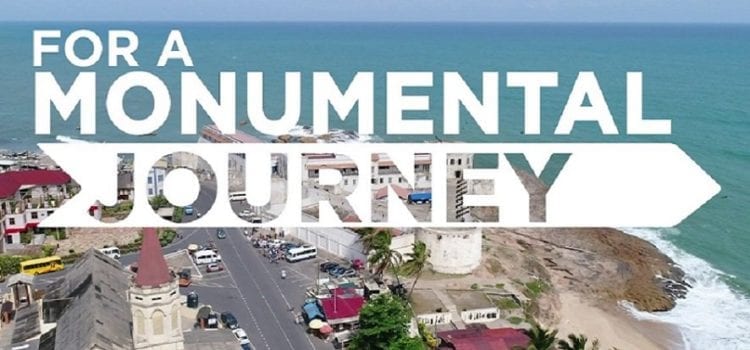
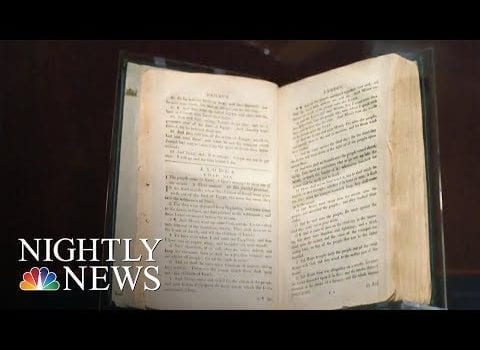
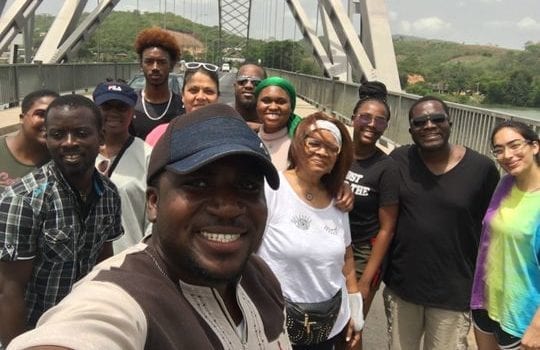

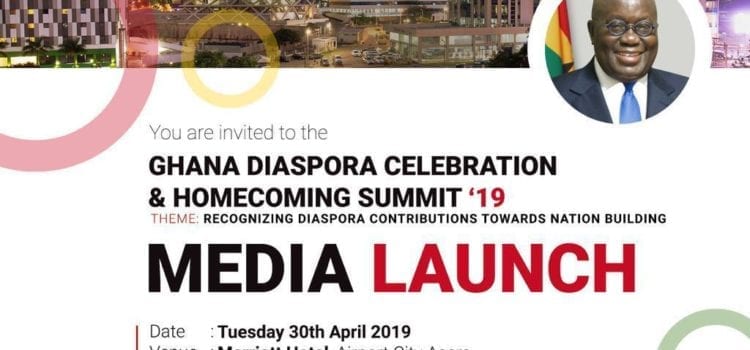
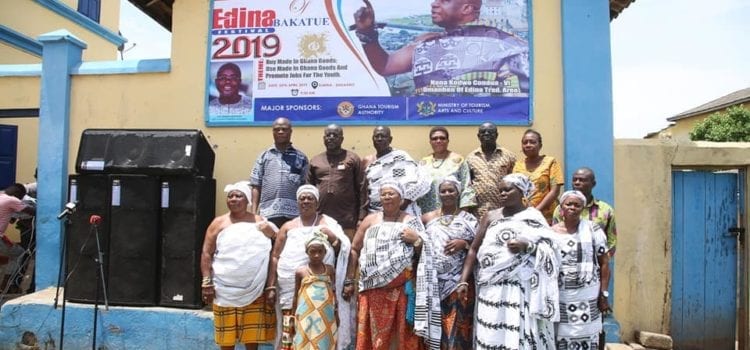
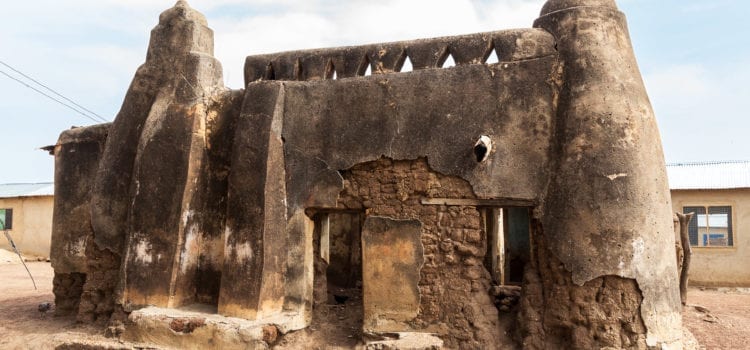
















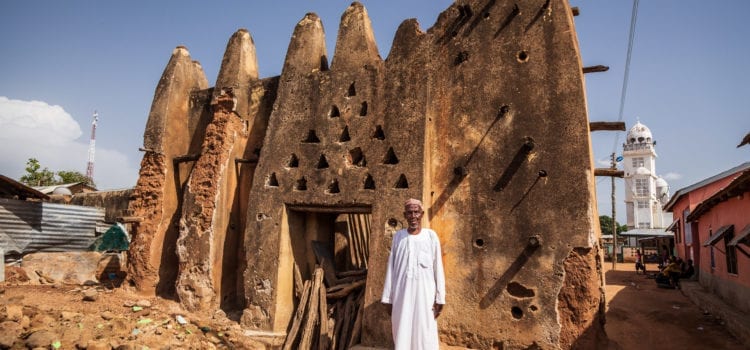
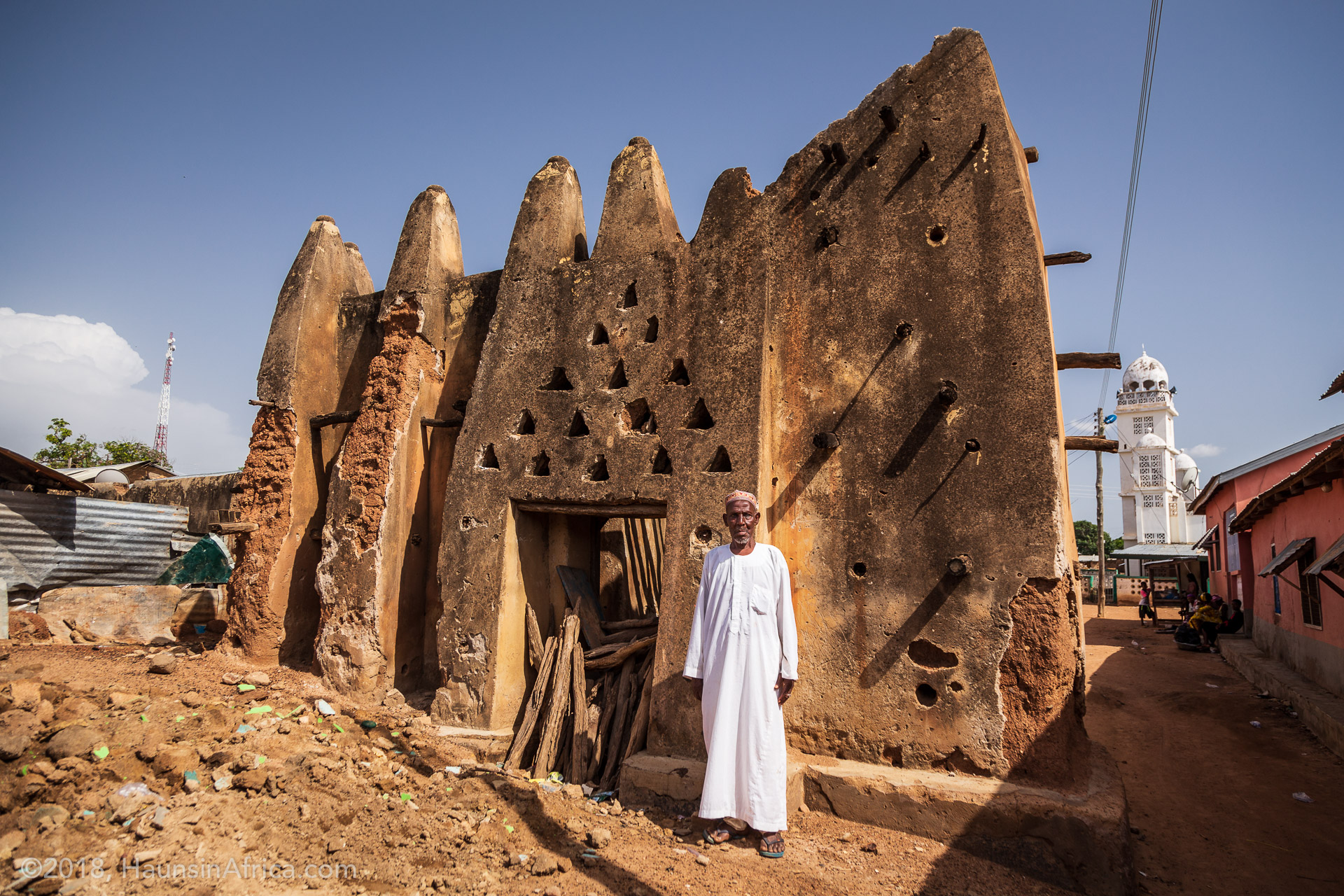
 Call Center: 0307007100
Call Center: 0307007100